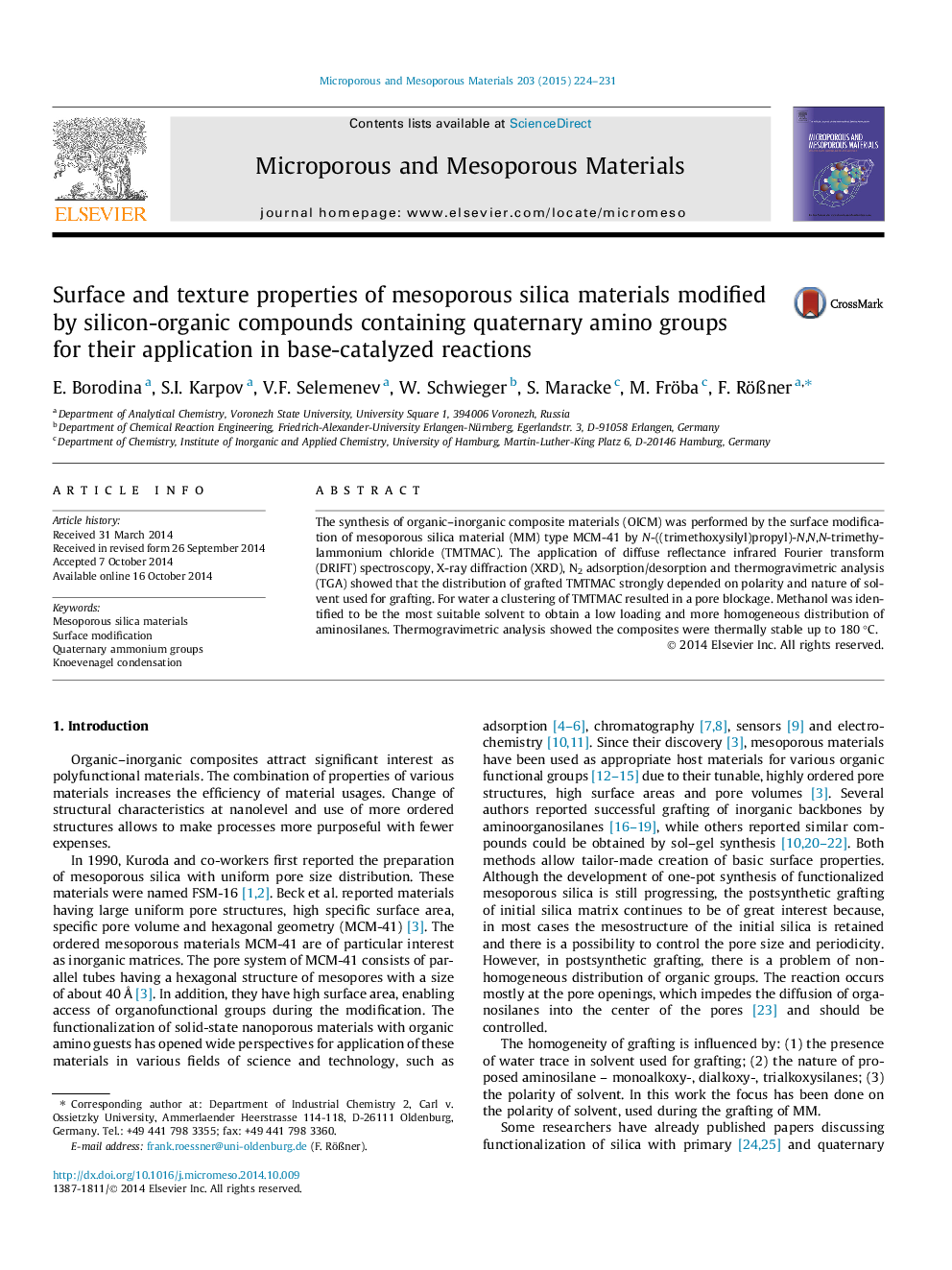| Article ID | Journal | Published Year | Pages | File Type |
|---|---|---|---|---|
| 72878 | Microporous and Mesoporous Materials | 2015 | 8 Pages |
•Grafting of mesoporous silica material with quaternary aminogroups.•Applying toluene as a solvent, a strong pore narrowing of mesoporous silica material with functional groups was detected.•In case of methanol a more homogenous distribution of organic groups is proposed.•Pore filling model for aminografted mesoporous silica.•Homogeneous distribution of functional groups increases the yield of the product in Knoevenagel condensation.
The synthesis of organic–inorganic composite materials (OICM) was performed by the surface modification of mesoporous silica material (MM) type MCM-41 by N-((trimethoxysilyl)propyl)-N,N,N-trimethylammonium chloride (TMTMAC). The application of diffuse reflectance infrared Fourier transform (DRIFT) spectroscopy, X-ray diffraction (XRD), N2 adsorption/desorption and thermogravimetric analysis (TGA) showed that the distribution of grafted TMTMAC strongly depended on polarity and nature of solvent used for grafting. For water a clustering of TMTMAC resulted in a pore blockage. Methanol was identified to be the most suitable solvent to obtain a low loading and more homogeneous distribution of aminosilanes. Thermogravimetric analysis showed the composites were thermally stable up to 180 °C.
Graphical abstractFigure optionsDownload full-size imageDownload as PowerPoint slide
